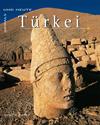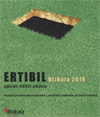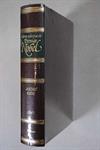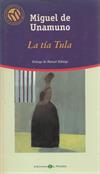
Spitfire Women of World War II
by Giles Whittell | History | This book has not been rated.
ISBN: 0007235364 Global Overview for this book
ISBN: 0007235364 Global Overview for this book
2 journalers for this copy...
Journal Entry 1 by Beqi from Daventry, Northamptonshire United Kingdom on Wednesday, August 24, 2011
Product Description
The story of the unsung heroines who flew the newest, fastest, aeroplanes in World War II -- mostly in southern England where the RAF was desperately short of pilots. Why would the well-bred daughter of a New England factory-owner brave the U-boat blockades of the North Atlantic in the bitter winter of 1941? What made a South African diamond heiress give up her life of house parties and London balls to spend the war in a freezing barracks on the Solent? And why did young Margaret Frost start lying to her father during the Battle of Britain? They -- and scores of other women -- weren't allowed to fly in combat, but what they did was nearly as dangerous. Unarmed and without instruments or radios, they delivered planes for the Air Transport Auxiliary to the RAF bases from which male pilots flew into battle. At the mercy of the weather and any long-range enemy aircraft that pounced on them, dozens of these women died, among them Amy Johnson, Britain's most famous flyer. But the survivors shared four unrepeatable years of life, adrenaline and love. The story of this 'tough bunch of babes' (in the words of one of them) has never been told properly before. The author has interviewed all the surviving women pilots, who came not just from the shires of England, but also from the U.S.A, Chile, Australia, Poland and Argentina. Paid GBP 6.00 a week, they flew -- in skirts -- up to 16 hours a day in 140 different types of aircraft, though most of them liked spitfires best.
HarperCollins
About the book
Of Pilots and Politics by Giles Whittell
One of the more sobering moments in the research for Spitfire Women came as the sun began to set over the dry hills of northern Arizona, and Kay Hirsch suddenly stopped talking. We had been deep in conversation about her wartime flying for perhaps four hours – first in a hotel coffee shop, then in the living room of her home on the outskirts of Prescott. She had made soup and sandwiches for lunch, and tea at tea-time. We had talked about her recruitment by the ATA from the Women’s Auxiliary Air Force, her training and her feelings of isolation on first being assigned to the all-women’s ferry pool at Hamble, where most of the pilots were vastly more experienced than she and not especially friendly.
This question of group dynamics was a delicate one. Kay wanted to be truthful, but didn’t want a writer whom she scarcely knew to seize on her memories of loneliness and use them to distort the record instead of setting it straight. I had the impression that after some initial doubts prompted by previous interviews that she had regretted giving, Kay had decided to trust me. I was wrong. ‘I don’t know why I’m telling you all this,’ she said sternly, after a long pause. ‘You’re not going to muck it all up, are you?’ All non-fiction involves cherry-picking other people’s stories. It can be a strangely brutal process, especially if the stories are also precious memories, shut away for generations for fear that they may be misused or misunderstood – and many of the Spitfire Women were as fearful in this respect as they were fearless in the air. So I did my best not to ‘muck it all up’, but was still nervous on publication. Never mind the general reader; what would the pilots think?
Mercifully, they seemed to approve. Kay wrote, on an old-fashioned aerogramme, to say she was pleased the book was out even if she wished I’d made clear that only 17 of 2,000 applicants for ‘ab initio’ flight training actually became ferry pilots (and I’m glad to have the chance to make that clear here). The irrepressible Margot Duhalde emailed a brisk thumbs-up from Santiago, where I’d drunk some exceptionally good Chilean Air Force cabernet sauvignon with her at the Air Force country club. But the most gratifying response was from a pilot they both remembered well, not least because her story was so hard to forget. It came in the form of a radio interview. The pilot was Betty Keith-Jopp, and the interview was with BBC Radio Scotland, after a producer had read in the book about Betty’s extraordinary escape from the bottom of the Firth of Forth, and had phoned her at her home in Port Elizabeth, South Africa, to hear it in her own voice.
Of all the ATA women I interviewed, Betty was the most nervous. This was partly because of an instinct to defer to pilots who attained higher ranks in the ATA (like Kay, she joined late in the war) and partly because she was still mortified at having lost a plane in the process of saving herself. But she had steeled herself to describe it all to me, and she did it again for Radio Scotland, prefacing her account with extraordinarily generous praise for the book.
That interview seems to have started something. Among the listeners was Nigel Griffiths, MP for Edinburgh South and a keen private pilot. Nigel read the book over the Christmas holiday and phoned me afterwards bubbling over with admiration for what the women had achieved. Towards the end of our conversation I mentioned that few of them had received any official recognition beyond a standard certificate of service. Twenty thousand surviving land girls, by contrast, had received a belated but warmly appreciated campaign badge from the Government the previous year.
Nigel knew all this already, and intended to do something about it. He first sought cross-party support (from Gerald Howarth of the Conservatives and Lembit Opik, the Liberal Democrat, both fellow pilots), then emailed Gordon Brown. The Prime Minister’s decisiveness in matters of state was being questioned on all sides at the time, but there was no hint of it in the matter of the veterans of the ATA. His support for Nigel’s idea for a ‘badge of honour’ was instant and unequivocal, and on 20 February he confirmed his approval at Prime Minister’s Questions.
The following day The Times published a front-page picture of Lettice Curtis climbing into a Spitfire. Her own book on the ATA, as it happens, is titled The Forgotten Pilots. If at last they have been unforgotten, it has been a privilege to help.
The story of the unsung heroines who flew the newest, fastest, aeroplanes in World War II -- mostly in southern England where the RAF was desperately short of pilots. Why would the well-bred daughter of a New England factory-owner brave the U-boat blockades of the North Atlantic in the bitter winter of 1941? What made a South African diamond heiress give up her life of house parties and London balls to spend the war in a freezing barracks on the Solent? And why did young Margaret Frost start lying to her father during the Battle of Britain? They -- and scores of other women -- weren't allowed to fly in combat, but what they did was nearly as dangerous. Unarmed and without instruments or radios, they delivered planes for the Air Transport Auxiliary to the RAF bases from which male pilots flew into battle. At the mercy of the weather and any long-range enemy aircraft that pounced on them, dozens of these women died, among them Amy Johnson, Britain's most famous flyer. But the survivors shared four unrepeatable years of life, adrenaline and love. The story of this 'tough bunch of babes' (in the words of one of them) has never been told properly before. The author has interviewed all the surviving women pilots, who came not just from the shires of England, but also from the U.S.A, Chile, Australia, Poland and Argentina. Paid GBP 6.00 a week, they flew -- in skirts -- up to 16 hours a day in 140 different types of aircraft, though most of them liked spitfires best.
HarperCollins
About the book
Of Pilots and Politics by Giles Whittell
One of the more sobering moments in the research for Spitfire Women came as the sun began to set over the dry hills of northern Arizona, and Kay Hirsch suddenly stopped talking. We had been deep in conversation about her wartime flying for perhaps four hours – first in a hotel coffee shop, then in the living room of her home on the outskirts of Prescott. She had made soup and sandwiches for lunch, and tea at tea-time. We had talked about her recruitment by the ATA from the Women’s Auxiliary Air Force, her training and her feelings of isolation on first being assigned to the all-women’s ferry pool at Hamble, where most of the pilots were vastly more experienced than she and not especially friendly.
This question of group dynamics was a delicate one. Kay wanted to be truthful, but didn’t want a writer whom she scarcely knew to seize on her memories of loneliness and use them to distort the record instead of setting it straight. I had the impression that after some initial doubts prompted by previous interviews that she had regretted giving, Kay had decided to trust me. I was wrong. ‘I don’t know why I’m telling you all this,’ she said sternly, after a long pause. ‘You’re not going to muck it all up, are you?’ All non-fiction involves cherry-picking other people’s stories. It can be a strangely brutal process, especially if the stories are also precious memories, shut away for generations for fear that they may be misused or misunderstood – and many of the Spitfire Women were as fearful in this respect as they were fearless in the air. So I did my best not to ‘muck it all up’, but was still nervous on publication. Never mind the general reader; what would the pilots think?
Mercifully, they seemed to approve. Kay wrote, on an old-fashioned aerogramme, to say she was pleased the book was out even if she wished I’d made clear that only 17 of 2,000 applicants for ‘ab initio’ flight training actually became ferry pilots (and I’m glad to have the chance to make that clear here). The irrepressible Margot Duhalde emailed a brisk thumbs-up from Santiago, where I’d drunk some exceptionally good Chilean Air Force cabernet sauvignon with her at the Air Force country club. But the most gratifying response was from a pilot they both remembered well, not least because her story was so hard to forget. It came in the form of a radio interview. The pilot was Betty Keith-Jopp, and the interview was with BBC Radio Scotland, after a producer had read in the book about Betty’s extraordinary escape from the bottom of the Firth of Forth, and had phoned her at her home in Port Elizabeth, South Africa, to hear it in her own voice.
Of all the ATA women I interviewed, Betty was the most nervous. This was partly because of an instinct to defer to pilots who attained higher ranks in the ATA (like Kay, she joined late in the war) and partly because she was still mortified at having lost a plane in the process of saving herself. But she had steeled herself to describe it all to me, and she did it again for Radio Scotland, prefacing her account with extraordinarily generous praise for the book.
That interview seems to have started something. Among the listeners was Nigel Griffiths, MP for Edinburgh South and a keen private pilot. Nigel read the book over the Christmas holiday and phoned me afterwards bubbling over with admiration for what the women had achieved. Towards the end of our conversation I mentioned that few of them had received any official recognition beyond a standard certificate of service. Twenty thousand surviving land girls, by contrast, had received a belated but warmly appreciated campaign badge from the Government the previous year.
Nigel knew all this already, and intended to do something about it. He first sought cross-party support (from Gerald Howarth of the Conservatives and Lembit Opik, the Liberal Democrat, both fellow pilots), then emailed Gordon Brown. The Prime Minister’s decisiveness in matters of state was being questioned on all sides at the time, but there was no hint of it in the matter of the veterans of the ATA. His support for Nigel’s idea for a ‘badge of honour’ was instant and unequivocal, and on 20 February he confirmed his approval at Prime Minister’s Questions.
The following day The Times published a front-page picture of Lettice Curtis climbing into a Spitfire. Her own book on the ATA, as it happens, is titled The Forgotten Pilots. If at last they have been unforgotten, it has been a privilege to help.
Journal Entry 2 by Beqi at The Cottage at Crabtree Farm in Newnham, Northamptonshire United Kingdom on Saturday, August 2, 2014
Released 9 yrs ago (8/2/2014 UTC) at The Cottage at Crabtree Farm in Newnham, Northamptonshire United Kingdom
WILD RELEASE NOTES:
Adding a selection of books to our new OBCZ in our lovely holiday cottage in Newnham. Feel free to help yourself to a book from the complimentary book shelf on the windowsill in the lounge. Maybe you would like to add one of your own books to our shelf, and then see how far it travels!
Journal Entry 3 by CrabtreeFarm at Newnham, Northamptonshire United Kingdom on Saturday, August 2, 2014
This book is now available on the official BookCrossing shelf at our little holiday cottage in the grounds of Crabtree Farm. The shelf itself can currently be found on the windowsill in the lounge. Feel free to help yourself to a book, there's no catch, it really *is* free. Enjoy the read and maybe you would like to journal your thoughts on it at bookcrossing.com and perhaps take the book on a journey with you and let us know where it has travelled to. Also, feel free to leave a book of your own on our shelf, and see how far it can travel. You'd be surprised!











